AMD returns to the high-end graphics card market with RX Vega
Vega will launch in August 14, with three new products and prices starting at $399.
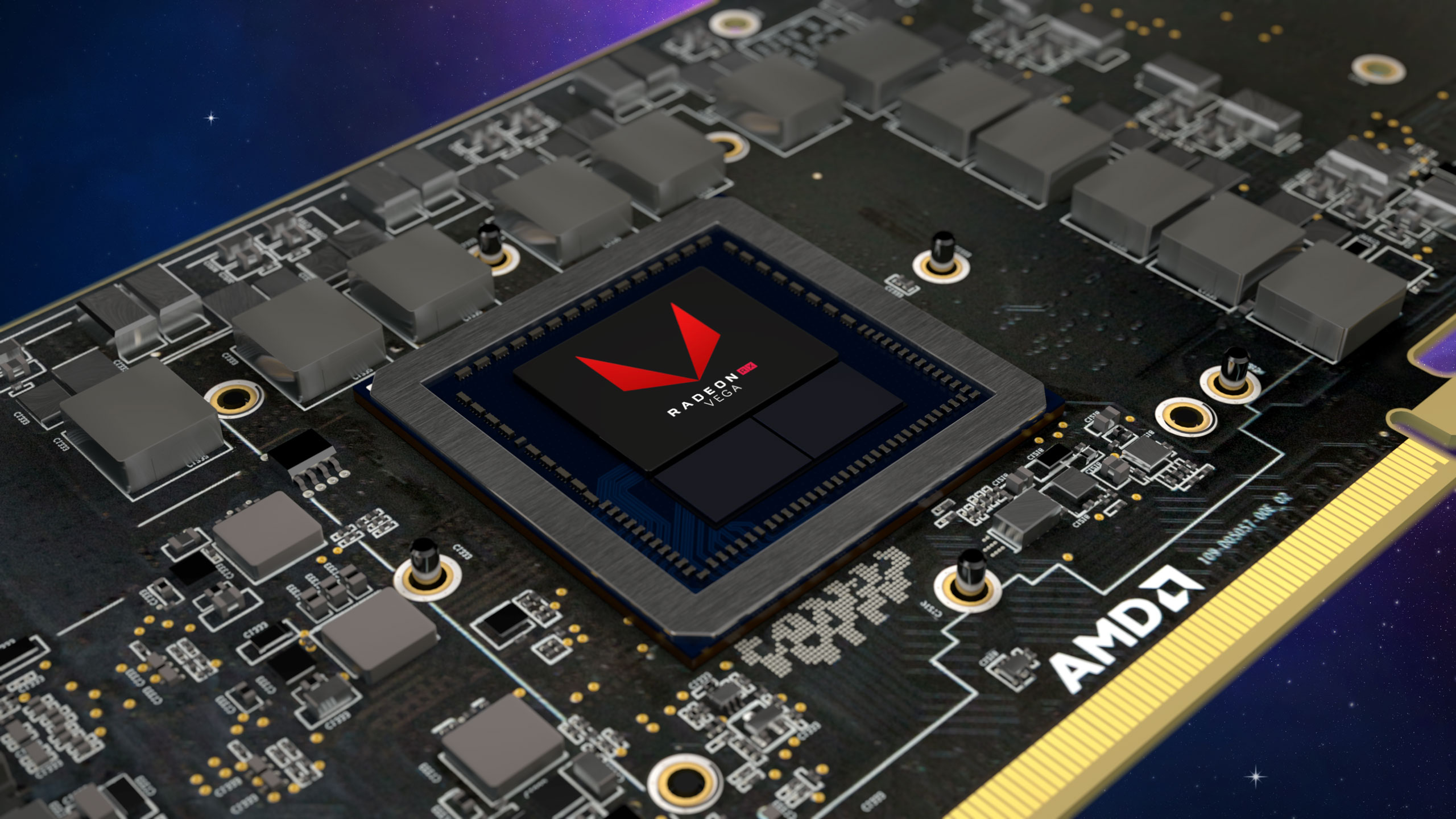
AMD has revealed most of the final details for its next two major hardware launches, Ryzen Threadripper and Vega 10. If you want to read more about Threadripper, I have a separate article covering Threadripper. Here, the story will be focused mostly on Vega and graphics cards.
Gamers have been waiting patiently for AMD's Vega architecture for a long time now. Ever since the mainstream Polaris debut in June 2016, we've wanted a new high-end solution to replace the R9 Fury X. 2016 came and went with no such card, though details on Vega's architecture were revealed earlier this year. Now, finally, the Vega cards are nearly here.
At its Tech Day held just before SIGGRAPH kicked off in Los Angeles, AMD revealed the full specs and pricing details for the various Vega models. The launch date is set for August 14. Here's the overview of the cards, with Fiji and Polaris 10 included as points of reference:

By the numbers, the Vega 10 architecture will be a big step up from AMD's previous designs. While Vega has the same number of streaming processors as Fiji, 4096 cores, each core is clocked significantly higher. If nothing had changed besides the clockspeed, Vega would be nearly 50 percent faster than Fiji. But it's not just about raw clockspeed.
AMD has put a lot of emphasis on Vega's High-Bandwidth Cache Controller (HBCC), which is designed to optimize memory accesses. At the same time, HBM2 delivers up to 8x the memory capacity per stack, giving Vega 8GB or 16GB of VRAM using two stacks, compared to 4GB using four stacks on Fiji. The combination should improve minimum framerates and help to eliminate stutters while gaming, along with allowing for significantly larger assets.
Other architectural improvements include packed FP16 math, potentially doubling the TFLOPS for workloads that don't need the increased precision of FP32. AMD worked with Futuremark for the 3DMark Sierra demo to show what FP16 could allow, showing performance improvements of 20-25 percent on average. With both AMD and Nvidia hardware now supporting faster FP16 packed math, developers will want to pay attention to areas where they can use the feature to improve performance without affecting image quality.
There's more of course. The geometry and shader pipelines have been reworked to be more efficient, AMD has added 40 new instructions to its ISA, and Vega will be the 'most complete' implementation of the DX12 and Vulkan APIs. That includes things like conservative rasterization tier-3 (vs. tier-2 on Nvidia's Pascal architecture). AMD spoke about its Draw Stream Binning Rasterizer (DSBR), which has up to 5X the primitive discard rate of Fiji (for geometry culling). The Vega also includes improved support for professional level features, things like SRIOV (for hardware virtualization). How much these improvements will matter down the road isn't clear, but giving developers additional flexibility is a good thing.
The biggest gaming news, reviews and hardware deals
Keep up to date with the most important stories and the best deals, as picked by the PC Gamer team.
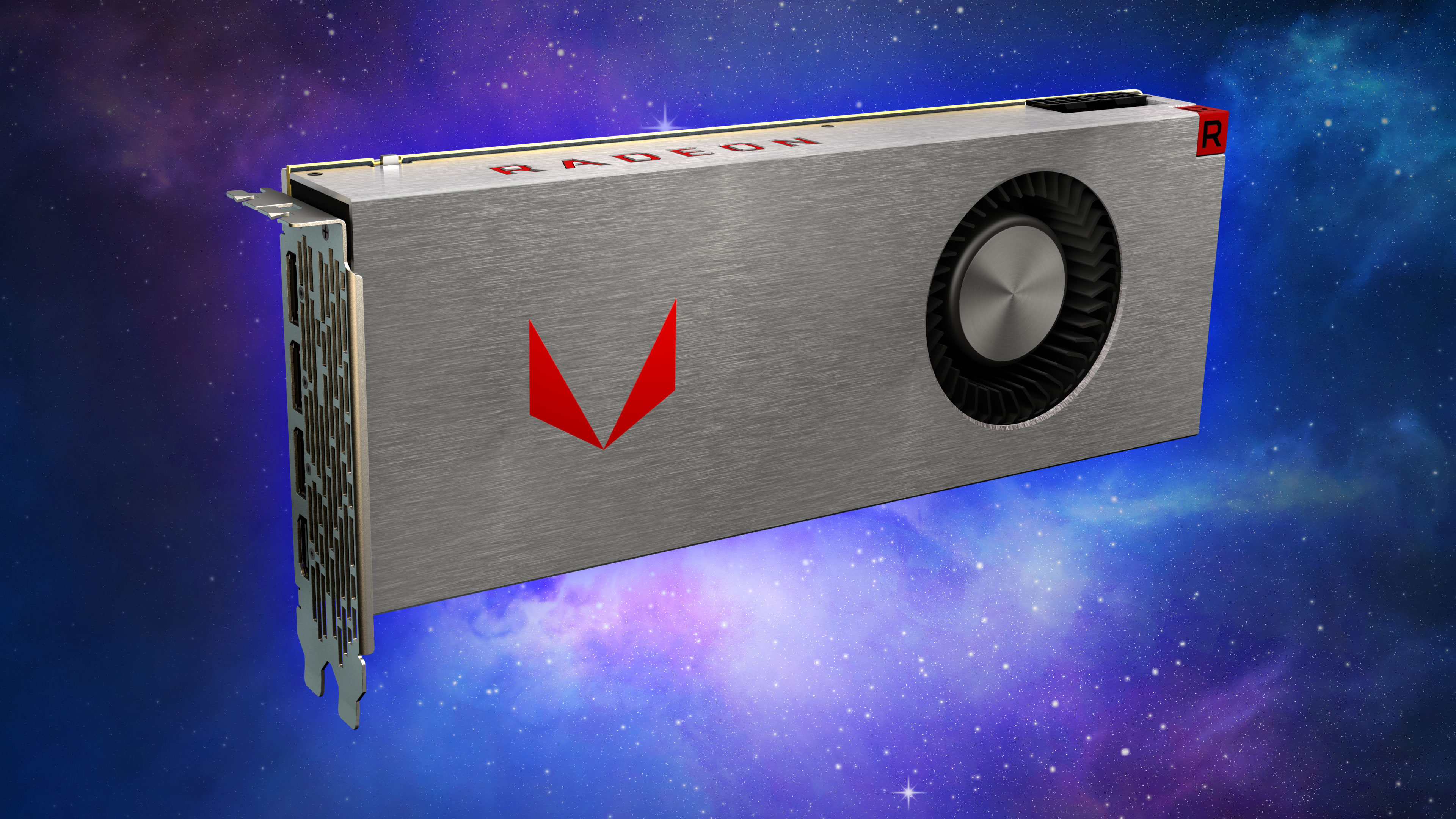
Pricing of Vega looks good, with the base RX Vega 64 starting at $499. That price is for an air-cooled graphics card, with no extras, but AMD will also have a liquid-cooled variant available (only as a limited edition, however). There will also be a lower spec RX Vega 56 that starts at $399, with performance that shouldn't be too far off that of the Vega 64.
There's a fourth consumer Vega card planned for the future, a Nano-like variant. AMD told us it will have a new ultracompact card later this year, though it hasn't revealed anything more than the initial plans at present. It should be similar in practice to the R9 Nano: lower clockspeeds and a much lower TDP, all crammed into a card that's just long enough to fill an x16 PCIe slot. For mini-ITX fans, this will be welcome news.
Along with the individual cards, AMD has various "packs" available that include additional hardware and games. These packs are designed to incentivize people who are building new PCs to buy into the AMD ecosystem, while the individual cards give a lower entry point for people that may already be in the AMD family.
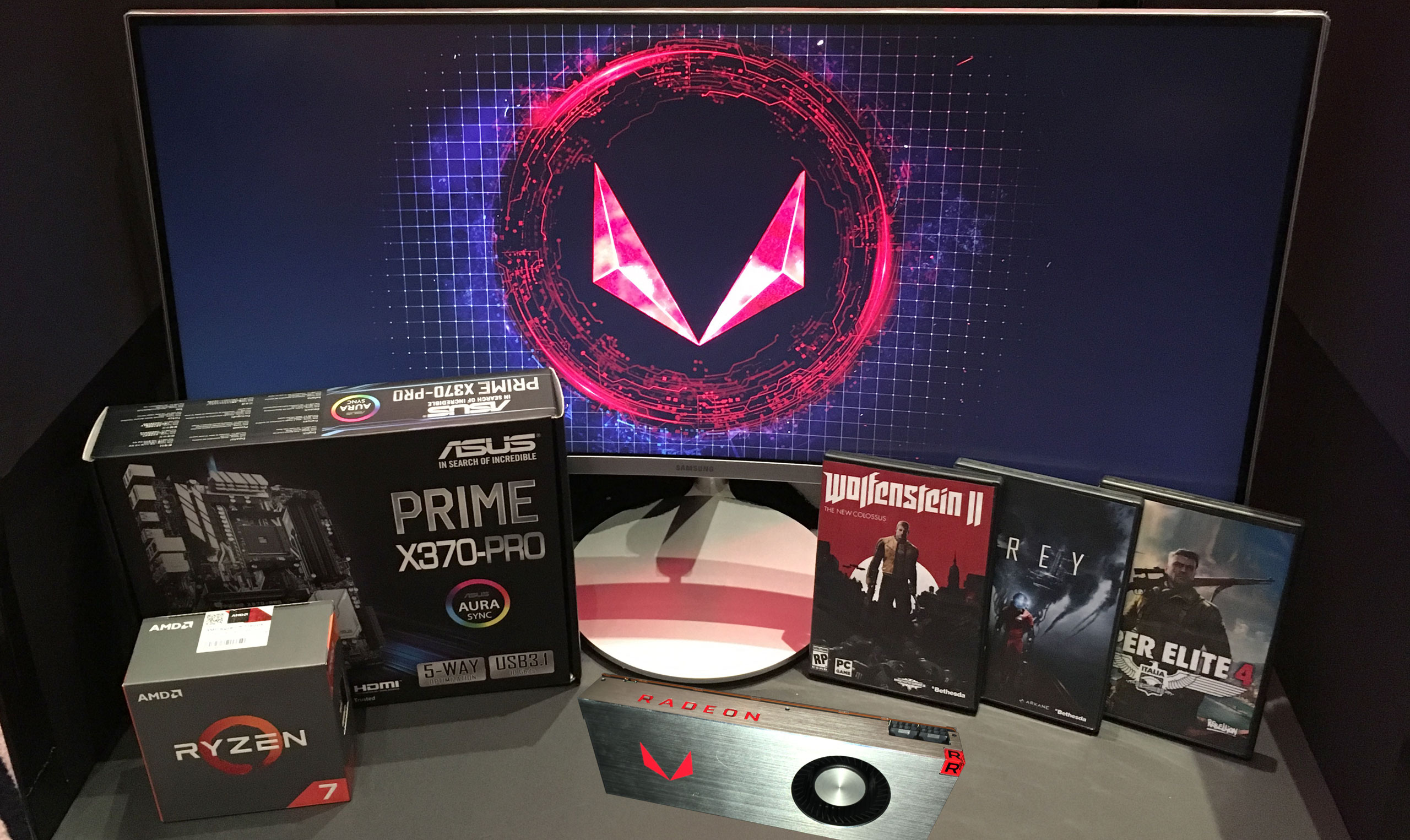
Each Pack includes an RX Vega card, with a $200 discount on select FreeSync monitors—only an ultrawide Samsung CF791 34-inch was specified at present, though AMD says others should be available by the time Vega launches. There's also a $100 discount on a Ryzen CPU/AM4 motherboard. Finally, there will be two free games (the North American market should get Prey and Wolfenstein II), with a retail value of $120. The monitor and CPU/motherboard discounts will only be at the time of purchase, so there's no going back and picking up a discounted display later.
There are three different packs. The Black Pack and will cost of $599 and includes the air-cooled Vega 64, the Aqua Pack includes a liquid-cooled RX Vega 64 card and carries a $699 price tag, and the Red Pack includes an air-cooled RX Vega 56 card and costs $499. Note that the Aqua Pack is the only way to get the liquid-cooled RX Vega 64, at least for now.
These packs include 'limited edition' versions of the air-cooled RX Vega 64 that use a brushed aluminum shroud. Individual cards use the standard black shroud that we're used to from previous cards like the RX 480 reference design. The air-cooled cards use blowers, though AMD notes the Vega cards will use 30mm blower fans compared to 25mm fans on previous generation cards, which should improve noise levels and cooling. AMD's reference Vega cards will also use high-end isothermic vapor chambers to improve cooling performance.
The AIB partners are of course free to create non-reference cards with open-air coolers and multiple fans. We expect custom AIB designs to show up in late Q3 or early Q4.
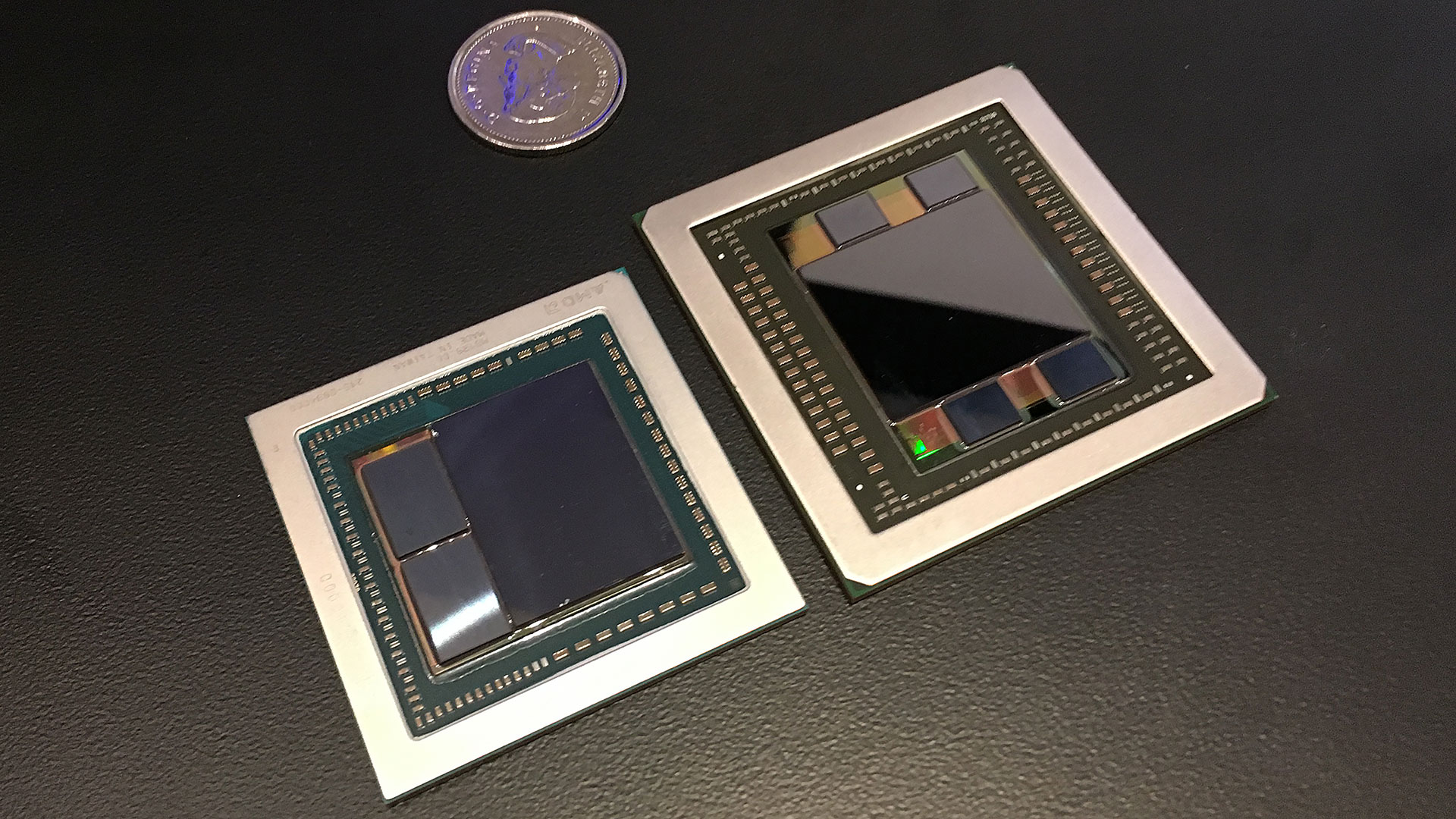
For all the good aspects, there are some concerns with Vega. Performance should be good, and AMD made many comparisons with Nvidia's GTX 1080. My impression based on what was said is that AMD expects the Vega 64 to trade blows with the GTX 1080—win some games, lose others, but on the whole performance should be comparable.
The problem is the GTX 1080 is over a year old now, and the 1080 Ti is the new king of the hill. GTX 1080 also has a 180W TDP and can get by with a single 8-pin power connector, while Vega cards we've seen use two 8-pin connectors. The board power quoted is also extremely high, at 345W for the liquid-cooled card and 295W for the air-cooled Vega 64. The Vega 56 has a far more tolerable board power of 210W, though it's clocked quite a bit lower to get there (and overclocking should be much better than on the Vega 64).
Board power doesn't mean the cards will necessarily use that much power while playing games, but based on the results from the Vega Frontier Edition it's safe to say power use will be much higher than Nvidia's 1080/1070 cards.
Vega is also late, not just to the high-end graphics card party, but initial hopes were that Vega would appear late last year. AMD never actually implied that would happen, but in December of last year we expected a June launch, not August. While Vega may compete well against GTX 1080, Nvidia is getting closer to releasing its Volta architecture. When Volta inevitably comes out, will it be a year before AMD can match it again? Let's hope not.

Performance expectations are also a bit odd as well. I've run lots of benchmarks on graphics cards, and across the games I've tested, the GTX 1080 is around 30-35 percent faster than the R9 Fury X. Given all the architectural changes AMD has discussed, plus the 47 percent increase in clock speed (theoretical compute performance), I really expected Vega to be closer to the 1080 Ti in performance, meaning 50-70 percent faster than Fury X. I don't have numbers from my own benchmarks yet, but if Vega is only matching the GTX 1080, that would indicate other areas are bottlenecking performance.
Put another way, if Vega 64 were clocked at 1050MHz, the same speed as the Fury X, would it actually be faster? It sounds like it might not be, though it would certainly use a lot less power at such a clockspeed. Basically, Vega 10 is a very forward-looking architecture, with enhancements like the HBCC, DSBR, additional instructions, and other changes making it something that may only show its full potential in future applications. And by the time those future applications are fully realized, we may have architectures that are one or more generations newer than Vega.
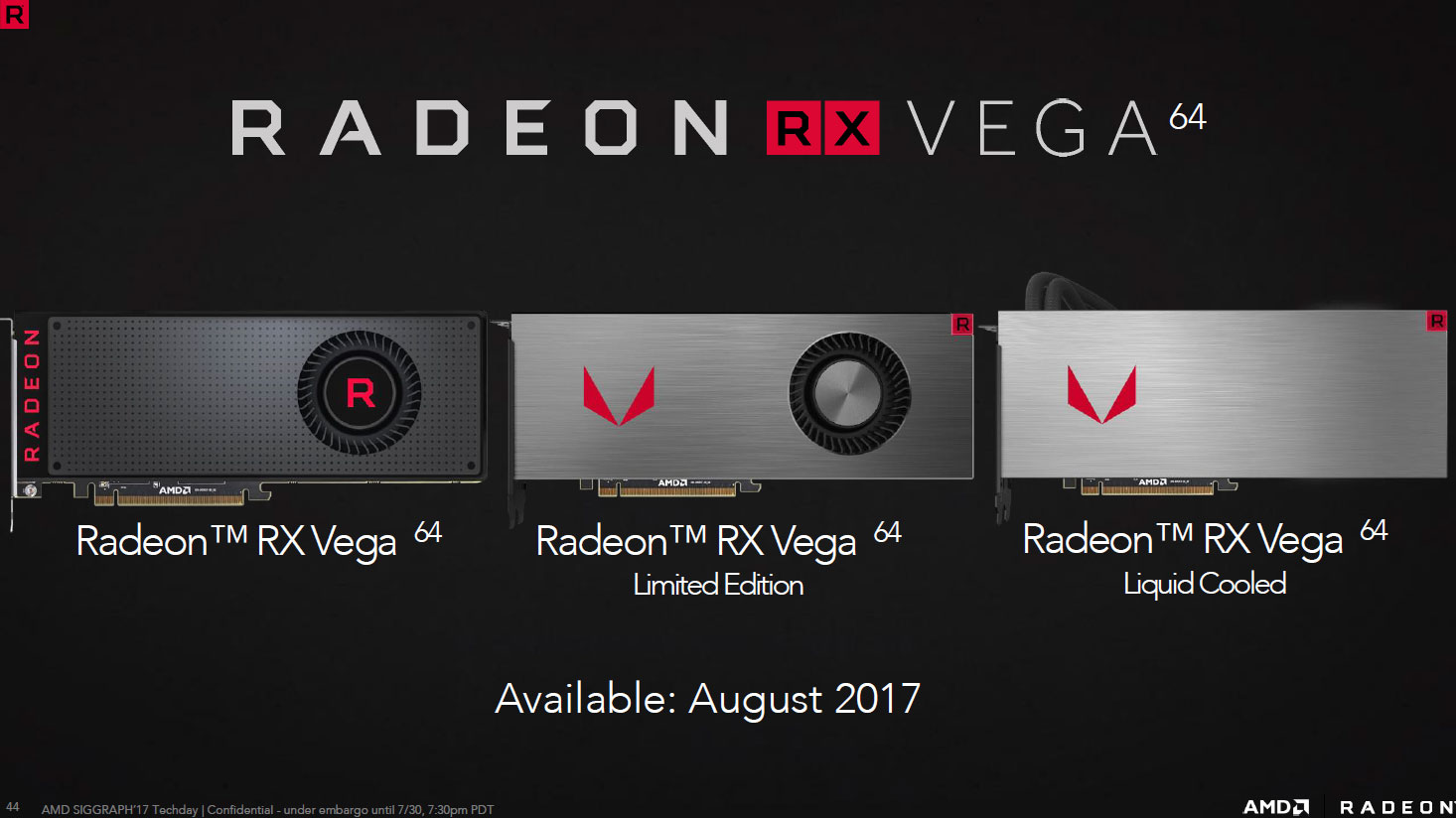
Even if Vega is a bit late and not as fast as some would have liked to see, though, it's shaping up to bring increased competition back to the graphics card market. This is something that's sorely needed, as Nvidia's 10-series has ruled the high-end for more than a year. That undisputed reign is largely to blame for the increase in GPU prices—eg, the GTX 970 launched at $329 and the GTX 980 at $549, while the GTX 1070 launched at $379 ($449 for the Founders Edition) and the GTX 1080 cost $599 ($699 for the Founders Edition).
AMD noted that roughly one million GPUs are sold every quarter that cost more than $350 (with 60 percent of those costing under $450). And AMD frankly admitted that, for the last year, it has had effectively zero percent of that market. Vega puts AMD GPUs back on the high-end roadmap, and having something to offer high-end gamers is better than nothing.
There's other good news as well, in that Vega isn't likely to be as attractive to cryptocurrency miners. That comes thanks to the power draw and price, as running six GPUs from a single power supply would be difficult with Vega 64. But AMD refused to even comment on mining hashrates, which tend to be highly variable based on factors like the memory type, driver version, and even OS version. Mining software has been tuned for the Polaris cards, so I wouldn't expect Vega to be tons faster, and the Vega Packs are another way of preventing miners from gobbling up all the new Vega GPUs. But if cryptocurrencies go up in price, and Vega delivers better returns than Polaris or other GPUs, all bets are off.
Much like AMD's Ryzen processors have caused a major disruption in the CPU market, forcing Intel to scale pricing back to more reasonable levels, Vega aims to do the same for graphics cards. AMD has the Vega Pro for the professional graphics market, as well as the compute and machine learning focused Vega Instinct. Hardware is only part of the battle for professional markets, and Nvidia's CUDA is well entrenched in those markets, but for companies not beholden to CUDA AMD offers a potentially far more affordable alternative.
The best news right now is that we're less than a month away from the full retail launch of Vega. At that point I'll be able to provide full details on performance in a wide variety of games, along with a look at overclocking performance. Vega right now feels a lot like AMD's Hawaii and Fiji parts, where it won't be the fastest GPU in every situation, but particularly at the lower tier $399 price point, the Vega 56 looks very promising—and it will almost certainly win the hearts of AMD overclockers.
It's going to be a very busy month for AMD, with both Threadripper and Vega coming to market. In fact, it's been a busy year of product launches from AMD, considering all the Ryzen models plus the RX 500 series. This is easily the most vibrant AMD I can recall, even topping the excitement of the Sledgehammer days. Once this launch is complete, AMD can look toward launching its Zen + Vega based APUs, which should be out later this year.
We'll be back with full benchmarks within the month.
Jarred's love of computers dates back to the dark ages when his dad brought home a DOS 2.3 PC and he left his C-64 behind. He eventually built his first custom PC in 1990 with a 286 12MHz, only to discover it was already woefully outdated when Wing Commander was released a few months later. He holds a BS in Computer Science from Brigham Young University and has been working as a tech journalist since 2004, writing for AnandTech, Maximum PC, and PC Gamer. From the first S3 Virge '3D decelerators' to today's GPUs, Jarred keeps up with all the latest graphics trends and is the one to ask about game performance.


